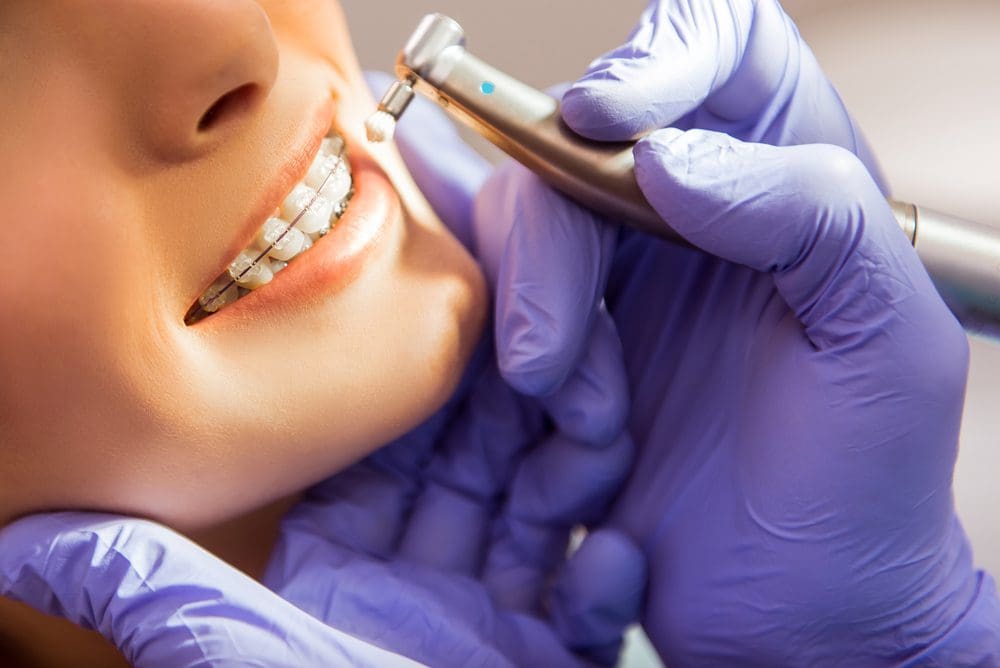Comprehensive Guide to Orthodontics Treatments for Dealing With Dental Imbalances
In the realm of orthodontics, the trip to achieving a completely straightened smile entails a myriad of procedures customized to deal with oral misalignments. From conventional dental braces to unseen aligners and even medical alternatives, the area of orthodontics provides a variety of services to deal with varying levels of oral abnormalities. Recognizing the complexities of each procedure, including their devices, benefits, and possible downsides, is crucial in making educated decisions regarding one's orthodontic treatment. As we browse via the extensive guide to orthodontic treatments for fixing oral imbalances, the complex information of each method will unfold, clarifying the path towards a functional and unified dental positioning.
Orthodontic Procedures Review

Normal adjustments and tracking are vital parts of orthodontic treatment to make sure progression is on track and to make any essential alterations along the way. By undertaking orthodontic procedures, patients can not only attain a straighter smile but additionally improve their total oral health and function.
Traditional Dental Braces: Exactly How They Work
When thinking about orthodontic treatments for oral misalignments, conventional braces stand out as a reliable method for correcting teeth placing. Conventional braces are composed of brackets, cords, and bands that function together to use continuous stress on the teeth, progressively relocating them right into the wanted placement.
One key element of exactly how conventional dental braces work is the process of bone renovation. As pressure is put on the teeth with the braces, the bone surrounding the teeth is improved to support the new tooth placements. This renovation is crucial for the long-term stability of the dealt with positioning. People will require regular adjustments at the orthodontist's workplace to make sure the dental braces proceed to apply the proper pressure for reliable teeth movement.
Invisible Aligners: Advantages And Disadvantages
These clear, tailor-made trays are practically unseen when worn, making them an enticing alternative for individuals looking for a much more cosmetically pleasing orthodontic treatment. Individuals can eliminate the aligners prior to eating or cleaning their teeth, reducing the risk of food getting stuck in the home appliance and streamlining the cleansing procedure.

Surgical Orthodontic Options
Surgical interventions in orthodontics present sensible alternatives for attending to complicated dental imbalances that may not be efficiently dealt with with standard orthodontic therapies. While standard braces and undetectable aligners can fix lots of orthodontic concerns, specific cases need medical treatment to accomplish ideal results. Surgical orthodontic choices are usually advised for extreme malocclusions, significant jaw discrepancies, and cases where the underlying bone structure requires alteration to achieve correct positioning.
One usual medical orthodontic procedure is orthognathic surgery, which entails rearranging the jaws to remedy functional issues such as difficulty chewing or speaking. This surgical treatment is usually performed in collaboration with an orthodontist that helps straighten the teeth prior to and after the treatment. Surgical orthodontics might also include treatments to reveal impacted teeth, eliminate excess gum cells, or improve the jawbone to create a more harmonious facial profile.
Prior to thinking about surgical orthodontic alternatives, patients go through a detailed a fantastic read evaluation to determine the need and prospective benefits of such treatments. orthodontics. While surgery might appear difficult, it can significantly boost both the feature and aesthetic appeals of the smile in situations where conventional orthodontic therapies drop short
Retainers and Post-Treatment Care

Failing to abide with post-treatment treatment guidelines can result in relapse, where the teeth progressively relocate back towards their original positions. Consistent retainer wear, great dental hygiene, and routine oral examinations are vital for maintaining the outcomes attained with orthodontic surgical procedure and guaranteeing the lasting security of the corrected dental placement.
Final Thought
In conclusion, orthodontic treatments provide numerous options for fixing dental misalignments. Surgical orthodontic options are available for more serious misalignments. Overall, orthodontic treatments can successfully enhance dental health and wellness and aesthetic appearance.
As we browse via the extensive overview to orthodontic procedures for correcting oral misalignments, the complex information of each method will unfold, losing light on the path toward a harmonious and functional oral alignment. - cumming orthodontist
One of the most usual orthodontic treatments is the use of dental braces, which consist of metal brackets and wires that apply mild stress to slowly shift teeth right into the preferred setting.When taking find closest dentist into consideration orthodontic treatments for dentists office near me oral imbalances, typical dental braces stand out as a time-tested method for remedying teeth placing. Additionally, unnoticeable aligners may not be appropriate for complex orthodontic concerns that call for even more significant teeth activity, as they are usually advised for mild to moderate situations. Retainers are custom-made orthodontic tools made to hold teeth in their dealt with placements after the conclusion of orthodontic therapy.